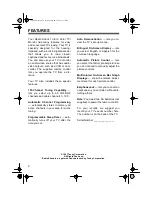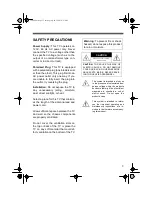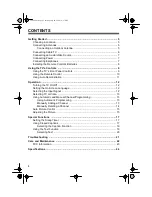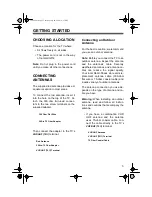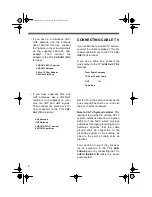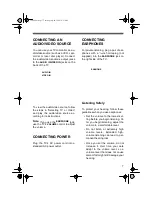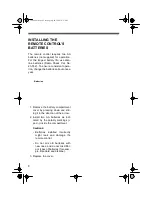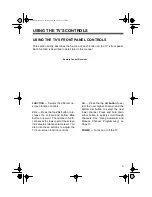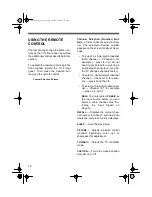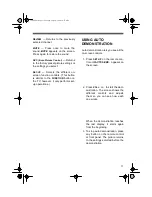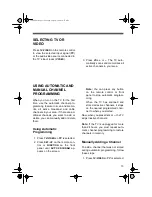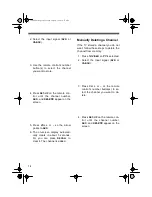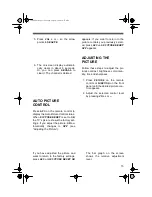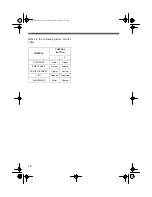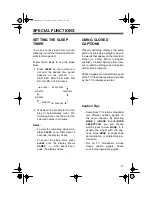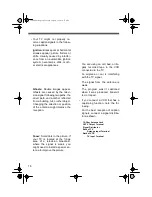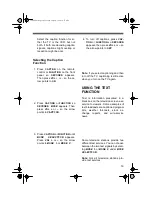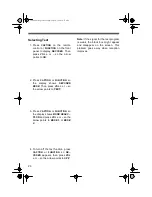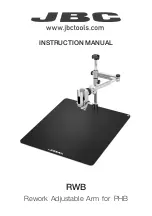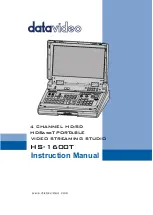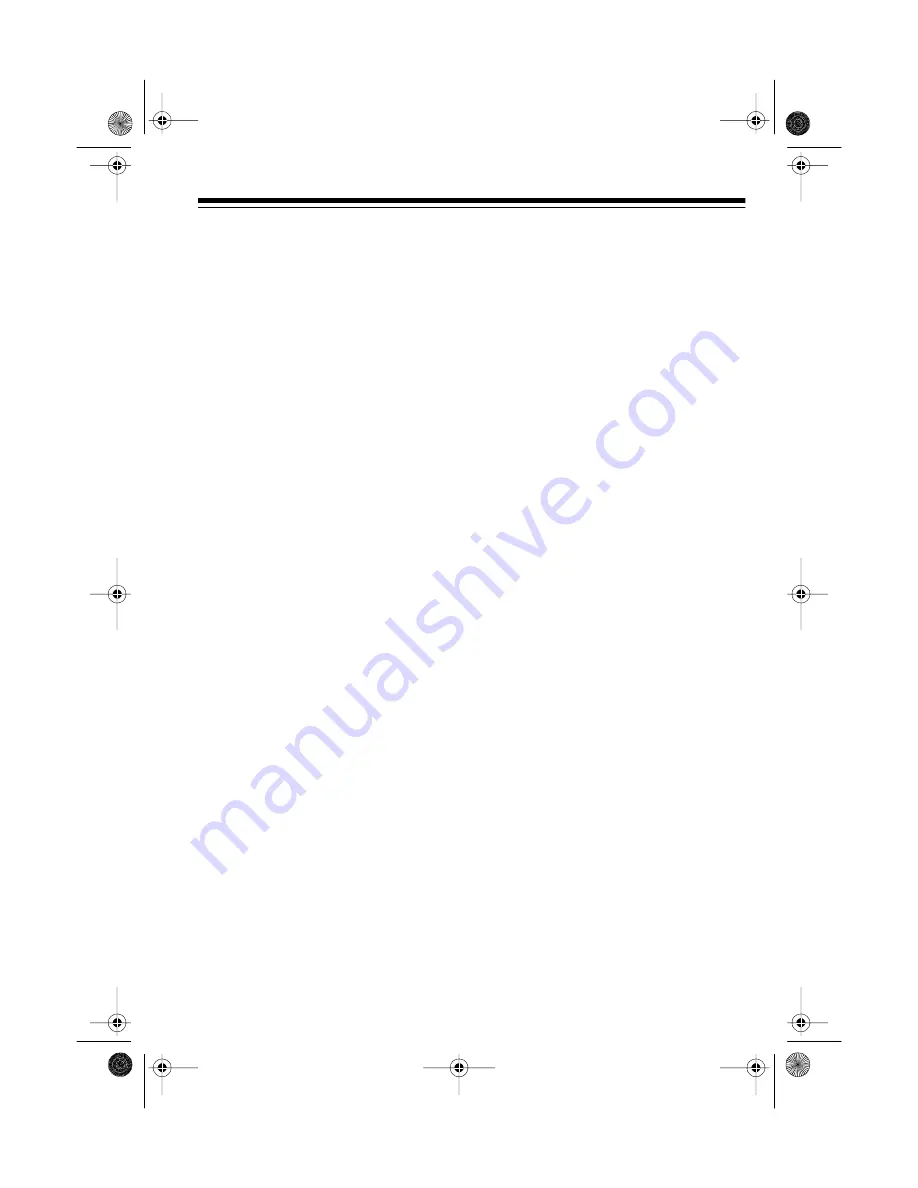
5
GETTING STARTED
CHOOSING A LOCATION
Choose a location for the TV where:
• Air flows freely on all sides.
• The power cord is not in the way
of normal traffic.
Note: Do not plug in the power cord
until you make all other connections.
CONNECTING
ANTENNAS
The supplied rod antenna provides ad-
equate reception in most areas.
To connect the rod antenna, insert it
into the hole on the top of the TV. At-
tach the 300-ohm twin-lead connec-
tors to the two screw terminals on the
supplied adapter.
Then connect the adapter to the TV’s
VHF/UHF (75
Ω
)
terminal.
Connecting an Outdoor
Antenna
For the best reception, we recommend
you use an outdoor antenna.
Note: Before you connect the TV to an
outdoor antenna, inspect the antenna
and the antenna’s cable. Severely
weathered antennas and antenna ca-
bles can reduce the signal quality.
Your local Radio Shack store sells re-
placement antenna cable (300-ohm
flat wire or 75-ohm coaxial cable) and
a wide variety of outdoor antennas.
The antenna connection you use de-
pends on the type of antenna and ca-
ble you have.
Warning: When installing an outdoor
antenna, read and follow all instruc-
tions and cautions that accompany the
antenna.
• If you have a combination VHF/
UHF antenna and the antenna
uses 75-ohm coaxial cable, con-
nect the cable directly to the TV’s
VHF/UHF (75
Ω
)
terminal.
300 Ohm Flat Wire
300-to-75 Ohm Adapter
300-to-75 Ohm Adapter
VHF/UHF (75
Ω
) Terminal
Rod Antenna
VHF/UHF Antenna
VHF/UHF (75
Ω
) Terminal
75 Ohm Coaxial Cable
16-289.fm Page 5 Tuesday, July 20, 1999 10:57 AM


